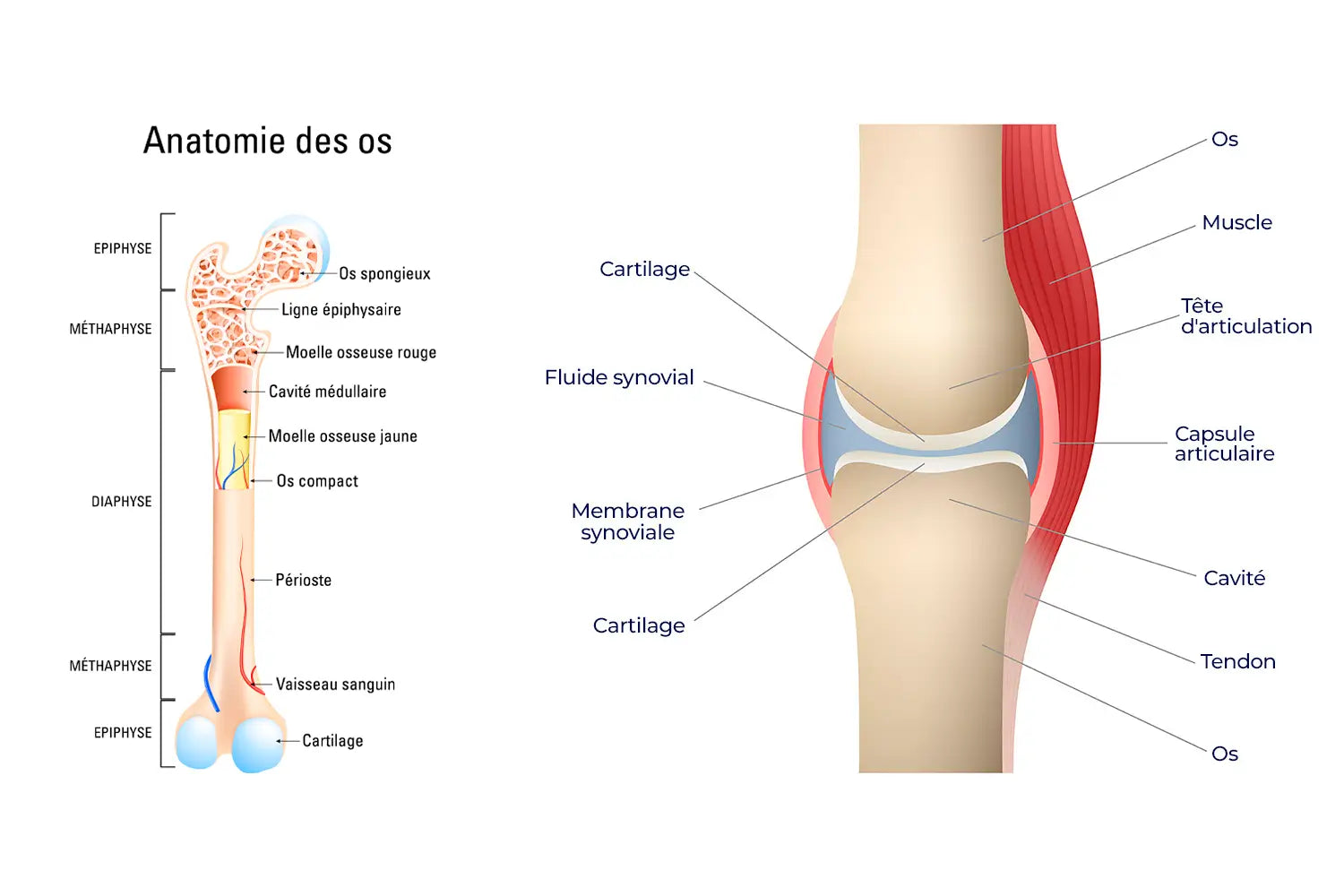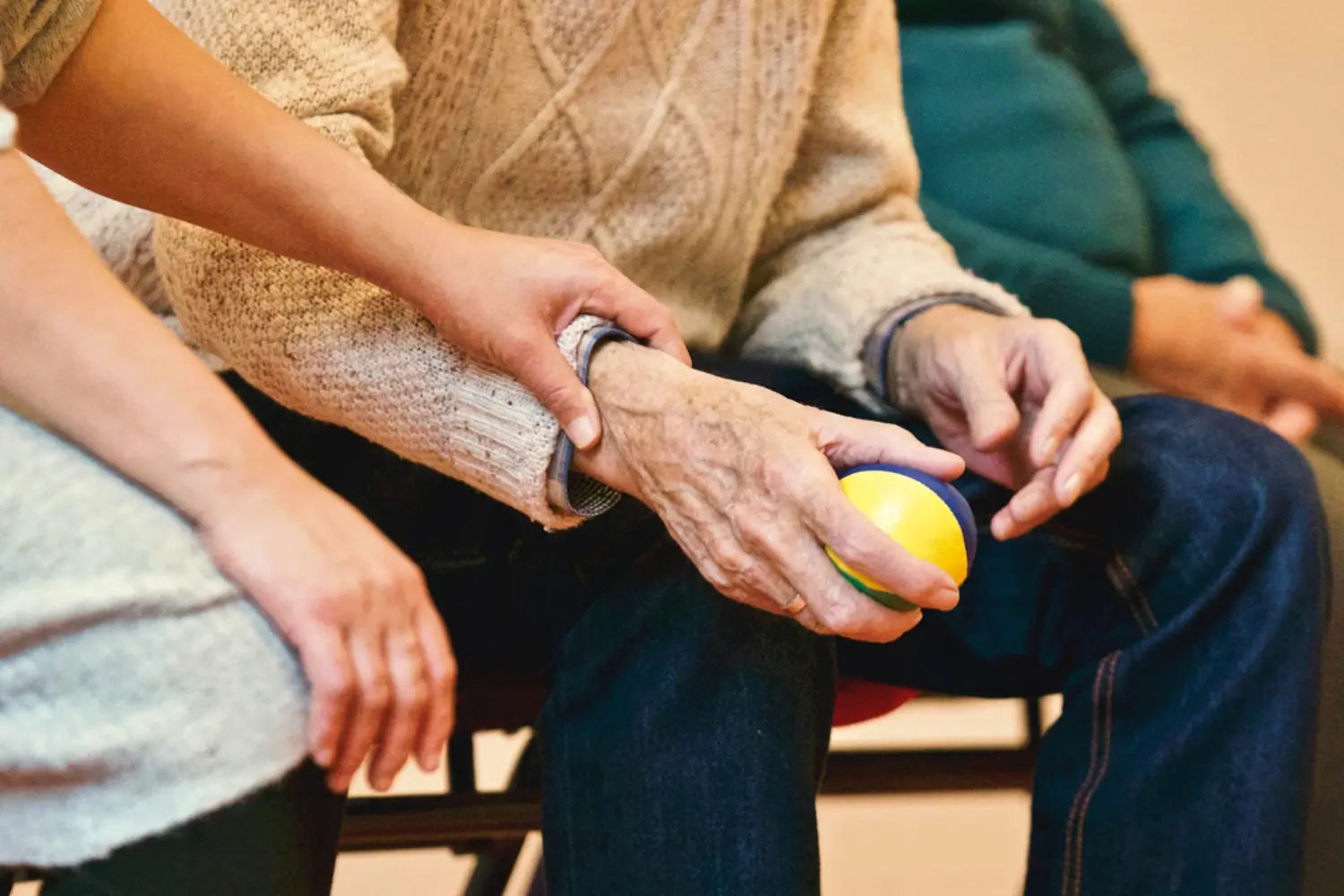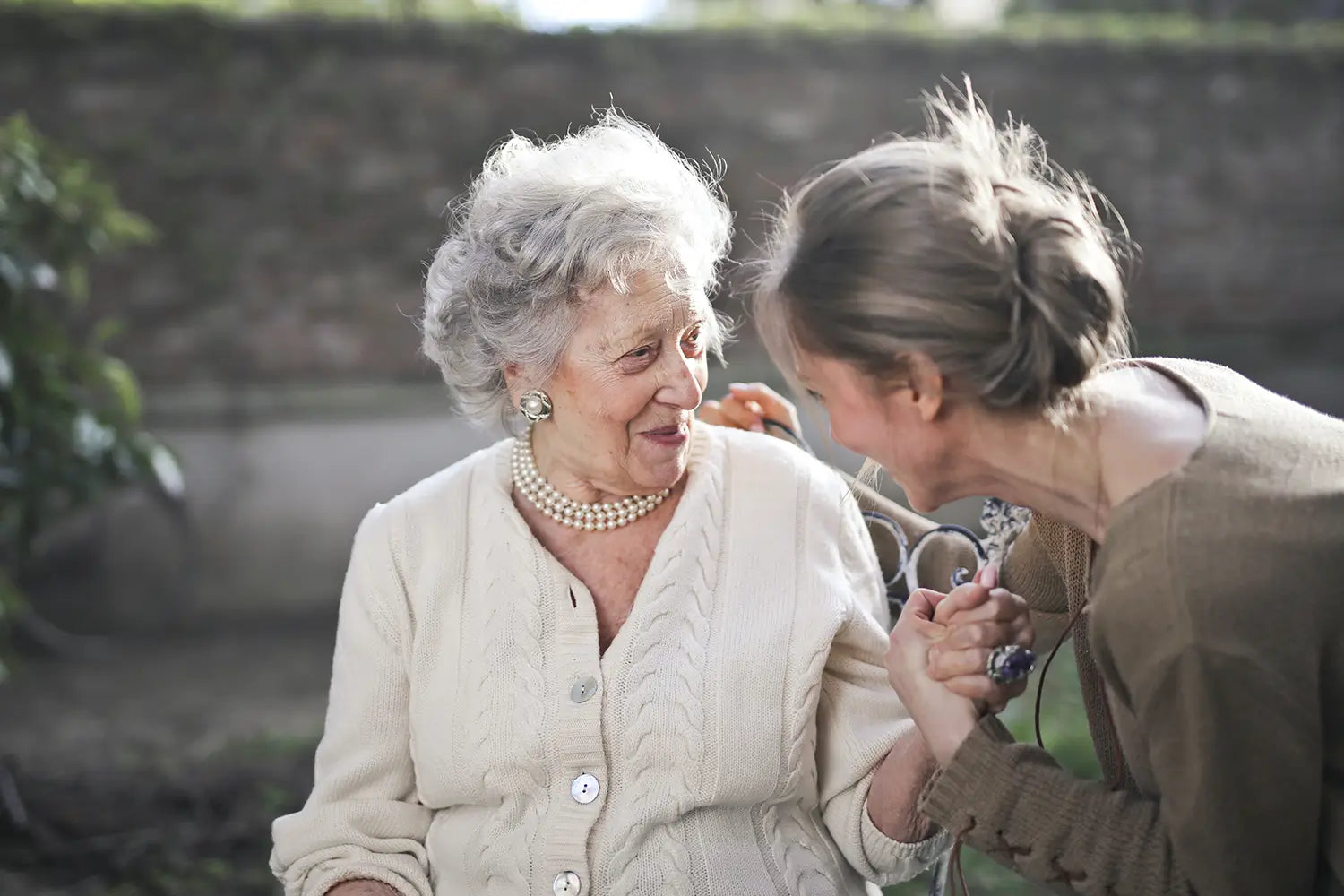This term covers more than 200 diseases that affect the musculoskeletal system: the bones, but also the tendons, muscles or connective tissues linked to the joints.


This term covers more than 200 diseases that affect the musculoskeletal system: the bones, but also the tendons, muscles or connective tissues linked to the joints.
Bone is composed of organic and mineral matter.
Organic materials
Bone cells (osteoblasts, osteoclasts, and osteocytes) and the materials produced by osteoblasts: proteoglycans, glycoproteins, and collagen. These molecules enable bone to withstand pressure and torsion.
Minerals
Inorganic molecules represent two-thirds of bone mass. These are mineral salts such as calcium phosphates.

It is the most mobile joint in the body. Like any machine, for the cogs to function without wear, it needs protection:
Articular cartilage
Composed of chondrocytes and an extracellular matrix, this tissue is soft and elastic. It covers the ends of bones and serves as a buffer.
Neither vascularized nor innervated, cartilage is devoid of lymphatic fluid. For cells to regenerate, metabolic exchanges (nutrient intake and waste export) depend on the action of a system that resembles a pump.
Capsule
A fibrous sleeve, it unites the bones and contains the synovial membrane.
Synovial fluid
It is the lubricant of our joint.
The acid-base balance depends on our diet and lifestyle: poor food quality or bad eating habits, stress, sleep problems, excesses of all kinds. If our pH level decreases (acidosis), the body will draw on reserves: bones, cartilage, etc. This imbalance over several years causes demineralization which can generate different kinds of bone pathologies.
All forms of arthritis, the most well-known being rheumatoid arthritis and certain rheumatisms such as psoriatic arthritis.
In most cases, it is hereditary. However, it can also result from trauma (accident, repetitive manual work, intensive sport, poor posture, etc.) or from a disruption of the immune system (infections, cancers, etc.).

Inflammatory rheumatism
This is one of the most common inflammatory rheumatic diseases. It mainly attacks the hands and feet. This degenerative disease progresses in flare-ups and ends up deforming or even destroying the affected joints. Patients have an abnormal level of T lymphocytes in the joints.
This form of lymphocyte (CD4 T) is part of the adaptive immune process and only proliferates if it identifies certain pathogenic antigens. It then triggers a process of destruction on the cartilage, the joint matrix and the bone itself.
Evolution
It develops in bursts that can vary in intensity and duration. Without treatment, it damages joints, can deform them, and cause serious disabilities.
Symptoms
This category includes all forms of osteoarthritis, diseases related to joint wear and tear. Mainly due to age, they can appear early in cases of autoimmune diseases, excess weight, a sedentary lifestyle, or, conversely, overuse of the joints.

Degenerative rheumatism
By the time symptoms appear, it is, in some ways, already too late. The deterioration of the cartilage likely began several years earlier. Not all osteoarthritis develops at the same rate: while in some cases the condition worsens rapidly, the condition of other patients remains fairly stable.
As it deteriorates, the joint is no longer protected. This deterioration is often accompanied by synovitis. The synovial membrane thickens and gradually destroys tissues, ligaments, and tendons.
Evolution
Symptoms
They include different pathologies of bones and cartilage: osteomalacia, bone cancer, bone dystrophies and the most common, osteoporosis.

Bone and cartilage disease
During growth, more bone cells develop than die. Bone mass and density peak around age 30. Afterward, the process slows, with bone loss occurring at about 1% per year.
In its primary form, it is genetic or due to aging. In its secondary form, it can be the result of other pathologies or certain medications. This disease does not cause any basic pain and is therefore often diagnosed late.
Evolution
It weakens the bones: it reduces the mass and quality of the bones which can lead to fractures, particularly in the neck of the femur or the vertebrae.
Symptoms
Raw material for bone cells
Trace elements are the elements that activate our metabolisms and allow them to function properly. It is therefore a natural solution that helps our body in its fight against the degeneration process.
This combination of trace elements acts synergistically and is therefore ideal for deacidifying the terrain (anti-inflammatory). Furthermore, magnesium and zinc also play a role in the ossification process.

Manganese
It is involved in the synthesis of the main components of cartilage. There is a direct relationship between manganese deficiency and osteoporosis. Like copper, manganese, through its action, fights free radicals responsible for inflammation. It also has a relaxing property.
Cobalt
Combined with manganese, it is essential for regulating vascular spasmodic manifestations so that metabolic exchanges are optimized. It has muscle relaxant properties.
Zinc
It catalyzes carbonic anhydrase and phosphatases active for osteogenesis and multiplication of bone fibroblasts.
Copper
It acts on the oxygenation of cells by participating in iron metabolism, essential for preventing tissue degeneration. It fights free radicals. It promotes the regeneration of collagen and elastin, elements of connective tissue responsible for the strength of cartilage, bones, hair and blood vessels.
Magnesium
It is involved in the development of cartilage and bone metabolism. These tissues retain twice as much magnesium as soft tissues, and in the latter, it is significantly more exchangeable than that of bone tissue. Like manganese, it has muscle relaxant properties.
Potassium
It activates bone biosynthesis using an enzyme produced from glucose by another enzyme, catalyzed by potassium and magnesium. In oligotherapy, its prescription is essential in cases of high sedimentation rate during inflammation. Indirectly, it is a balancer of smooth muscle, cardiac and vascular cells and promotes good circulation.
Lithium
The interest in its use lies in its medicinal property as a muscle relaxant.
This combination of trace elements acts in synergy and is therefore ideal for supporting the body in its fight against the process of osteoarticular degeneration.

Fluorine
The fluoride content of bones (1000 to 5000 ppm) is higher than that of teeth (1000 ppm). The rate of incorporation of fluoride into bone decreases with age, in parallel with the degeneration of bone tissue. It catalyzes the synthesis of collagen, which explains its indication for osteoligamentous hyperlaxity, rickets and scoliosis in childhood, as well as for the consolidation of fractures.
Iodine
It balances thyroid functions. Thanks to the calcitonin produced by this gland, iodine has a vital effect on calcification, bone growth, and callus formation in the event of a fracture. By stimulating the cardiovascular system, it promotes metabolic exchanges and indirectly acts on degenerative rheumatism.
Calcium
As a building block, 99% of calcium is found in bones in the form of calcium phosphate. The remaining 1% plays a vital role in blood clotting, heart function, and nerve and muscle excitability.
Phosphorus
It is one of the main components of bones and plays a fundamental role in ossification. It is essential for the entire body as a source of energy.
Sulfur
It is an important constituent of connective tissues, particularly cartilage. The benefits of sulfur for rheumatism have long been known in thermalism. It neutralizes many toxins in the intestine.

Marine proteins
Derived from the recovery of cartilage from North Sea fish caught for human consumption, Protagel is made up of more than 80% marine proteins, as well as a range of minerals. Its composition has been designed to resemble that of human connective tissue.
Sport
Choose an activity suited to your condition: yoga, stretching, walking
Food
Diet
Being overweight increases the pressure on your joints. Losing a few pounds can relieve pressure on them and significantly slow the degeneration of your cartilage.
Massage
Massage can soothe pain, tone peripheral muscles and correct poor posture.